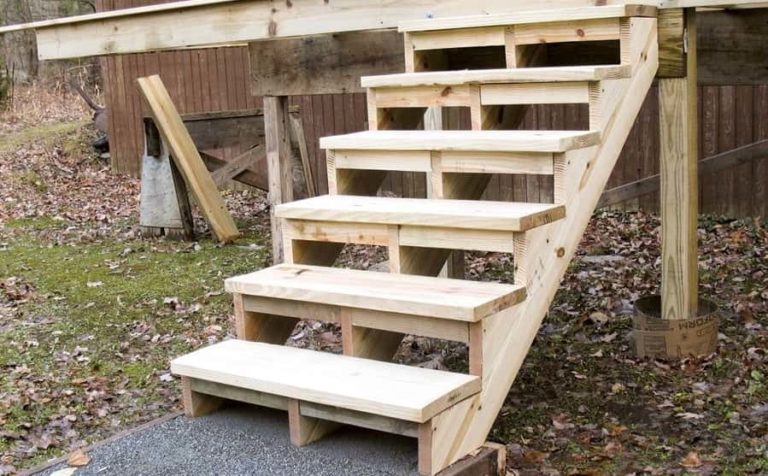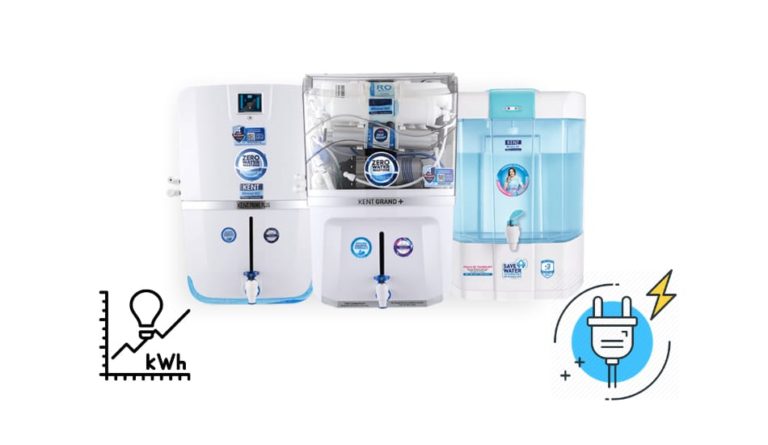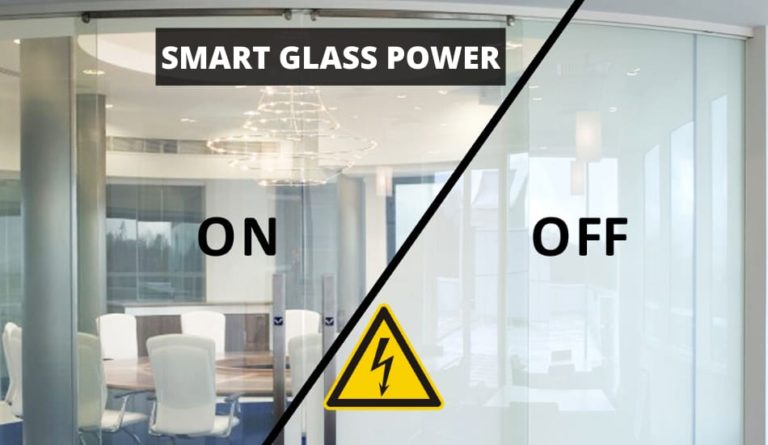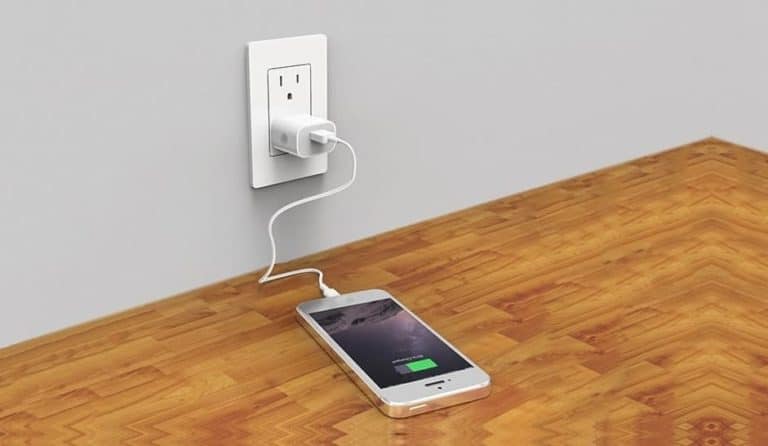How Much Power (kWh) Does a Blender Use?
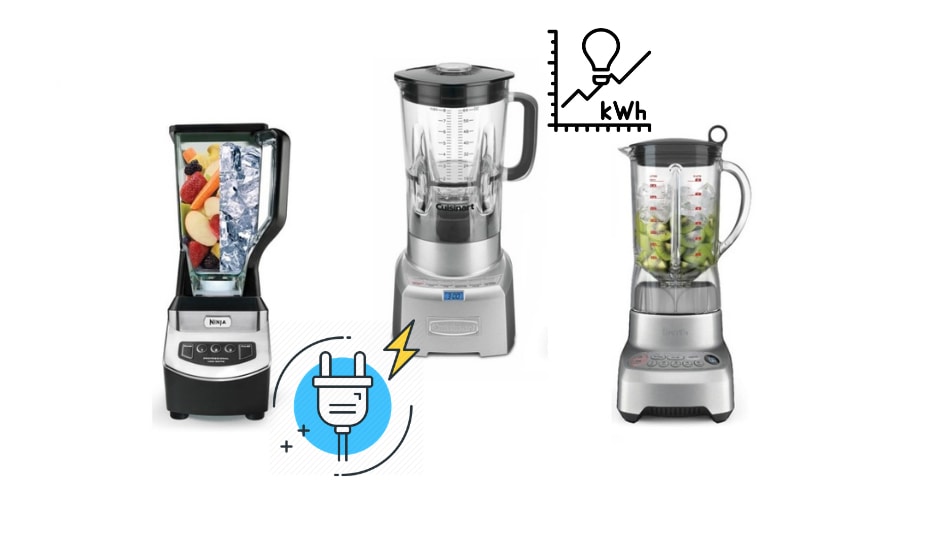
Manufacturers are constantly improving kitchen appliances, helping housewives to prepare food and desserts faster and more efficiently. A blender is one of the irreplaceable things that make the process of preparing many dishes easier. But blenders come in a lot of different shapes and power models that range from 200 to 1500 watts. The more watts a blender has, the more powerful it is, and the more electricity it will consume. In this article, we’ll explain how much power does a blender use and how it will affect your energy bill. So, let’s start!
Table of Contents
How Much Electricity (Power) Does a Blender Use?
So How Much Power Does a Blender Use? The average blender consumes around 0.4 kWh of energy per hour. Therefore, if you use a 400 W blender for an hour it will cost you around 0.052 cents. (13 cents per kW is the average price in the United States). The more power (watts) the blender has, the more electricity it will consume.
Today we have blenders that range from 200 W all the way up to 1500 W. These different models and their power most often depend on their purpose, the weaker ones are intended for making simple things like fruit shakes, while the ones with higher power are used for stiffer nutrients like nuts, ice, etc. That’s why it is important to choose a blender for your needs so you don’t spend more energy than you need.
If you are looking for some model to buy, this is the Blender Ninja BL660 Professional that we recommend.
In the table below you can see the most popular blender models on the market from high power to low power and how much energy they consume.
| Blender Type: | Power (Watt): | Cost per Hour: | Cost per Month: |
|---|---|---|---|
| Vitamix 5200 Blender | 1300 W | 0.169 cents | $5.14 |
| Ninja BL456 Nutri Edge | 900 W | 0.117 cents | $3.56 |
| NutriBullet NBR-1201 Blender | 600 W | 0.078 cents | $2.37 |
| Ninja 400-Watt Blender | 400 W | 0.052 cents | $1.58 |
| Hamilton Beach Personal Blender | 200 W | 0.026 cents | $0.79 |
What Blender Power Tell Us And Why It is Important?
The power of a blender is a measure of its ability. It depends on it whether the blender can cope with a particular task, for example, grinding ice or raw meat. Therefore, Power is the main criterion when choosing a device. The higher the number of watts, the more tasks the blender can perform. With low-power blenders, you can’t grind all types of food, only soft and loose ones. If you “force” a blender with low power to grind, for example, ice, it will overheat and break down over time.
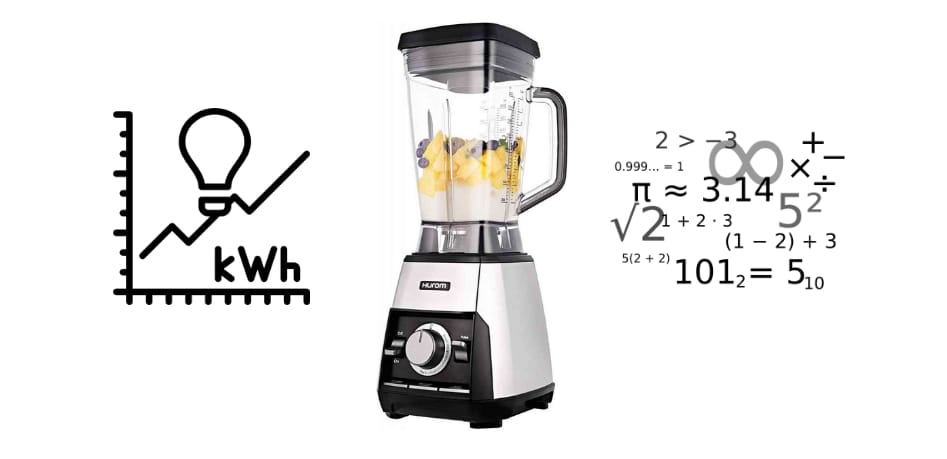
The power of a blender can vary from 250 watts from the simplest models to 1500 watts for professional ones. If you use the blender to grind mainly vegetable, fruit purees, or smoothies, for example, a blender with a power of up to 500 watts is quite suitable for that job.
For more complex tasks, for example, chopping hard and frozen vegetables or meat, you can choose a “stronger” blender that exceeds the power of 500 watts, preferably 600-700 watts. If the power is more than 1000 watts, then most likely we are dealing with a professional blender that can grind almost all the food or groceries.
How Many Watts Should a Good Blender Have?
A good blender should have around 500 to 800 watts of power, which will suit perfectly for making a typical smoothie, frozen desserts, or grains and cereals. Blenders that have less than 300 watts of power should carefully choose the foods that can be put into it. Therefore, we definitely recommend using blenders of 500 watts or more.
If the blender is used often, it will consume more electricity, which will lead to a bigger electric bill. The reason why blenders use a lot of electricity is because of their motors that need a lot of power to operate. A blender is working on the principle to transform electrical energy into mechanical energy. In the next chapter, we will explain electricity consumption and how it impacts the electric bill.
If you want to know How Much Electricity Does a Mini Fridge Use, read this article.
Blender Calculator: How Much Power It Uses
For those who want to know more about how to actually calculate the power consumption of the blender that you bought, we will explain what you need to do step-by-step. First, take a peek at the label that is located at the bottom (or at the back) of your blender.
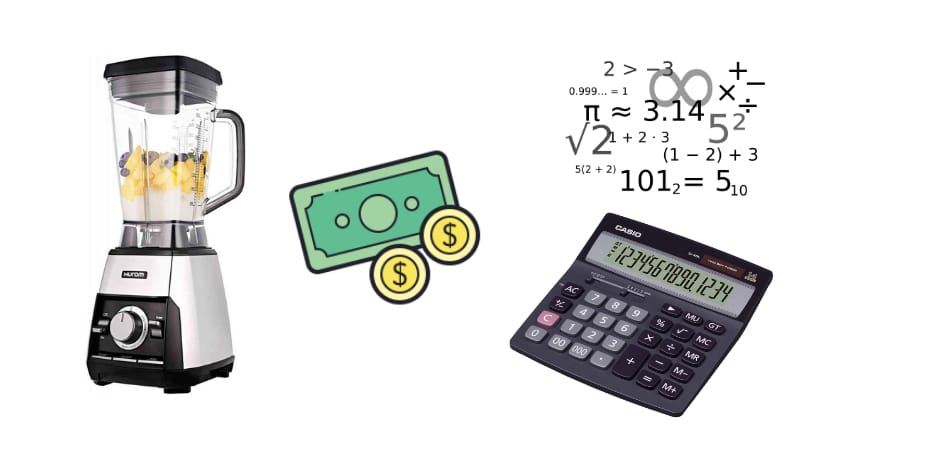
On that label, you will find electrical ratings that will be labeled in terms of Voltage (V) and Amperage (A) or Watts (W). By this data, you can easily determine the blender wattage by using the following formula:
- Watts (W) = Volts (V) x Amps (A)
To get the exact power consumption value that electric blender use in kWh, you need to do the following:
- The capacity of your electric blender needs to be expressed in watt.
- The number of hours that your electric blender was used in one day.
For those who want to calculate power consumption in a simpler way, you can use this free Blender Calculator.
Just simply enter the wattage, cost per kWh, and hours of usage. In this calculator, you will get the total energy consumption for your blender per hour, day, week, month, and year.
290 W Blender Power Consumption Example
Here we will make an example of the power consumption of a home blender with 290 Watts. We will take all possible data into account to get the most accurate consumption. Keep in mind that 13 cents per kW is the average price of electricity in the United States.
Electrical Blender: 290 Watts
Turning [W] into [kWh]:
- 290/1000 = 0.290 [kWh]
- 0.290 x 0.13 = 0.037 [$/h]
Operation Cost
- Cost per minute: 0.06 ¢
- Cost per hour: 3.7¢
- Cost per day: 28¢
- Cost per month: $5.35
Is 400W Enough For a Blender?
A 400 W blender is enough if you will use it to make fruit smoothies such as bananas, coconut milk, yogurt, eggs, etc. With blenders that have a power of up to 400 watts, you must make sure that the food you put inside is easily degradable, ie not hard such as walnuts, ice, apples, etc.
Is Higher Watts Better For Blender?
It depends on what you are going to use the blender for. First, we need to understand that the power of a blender is measured in watts. The higher wattage the blender has, the more powerful it is. If you are looking for a blender that is capable of making smoothies with the use of hard items like vegetables and ice, then you need a higher wattage blender. Every blender comes usually with 10 speeds, but most people don’t use that many.
How to Actually Measure Power Consumption?
If you want to know precisely how much power does your blender use, then the best method is to use Kill A Watt Meter. By using this device, you will not only be able to measure the blender power but you can measure any electric devices that you have in the house. Therefore, my advice is to get this tool to measure the real power of your blender, and you can check the price on Amazon HERE.
5 Best Blenders For Energy Savings
Each of us wants to save on electricity consumption, so it is important to choose the most economical device for the task. The table below presents the best blenders that can help you save energy.
| Product: | Type: | Power (Watt): | Available: |
|---|---|---|---|
| 1. Ninja BL660 Professional Blender | Conventional | 1100 W | Check Price |
| 2. NutriBullet NBR-1201 Blender | Personal | 600 W | Check Price |
| 3. Muller Immersion Hand Blender | Hand | 500 W | Check Price |
| 4. Smeg BLF01 50s blender | Personal | 800 W | Check Price |
| 5. Magimix Power Blender | Conventional | 1300 watts | Check Price |
Final Thoughts
A blender is an integral part of every kitchen, and many of us use it almost every day. But this electrical device also consumes a lot of energy as we have seen in this article, so it is important to be informed how much it can actually increase our electricity bill at the end of the month. What we could learn from this article is that the most important factor is how much watts a blender has, because that is what affects energy consumption. The average power of electric blenders in the household is about 500 W. I hope you are now much better acquainted with how much energy the blender actually drains and that you are more aware of your consumption.



